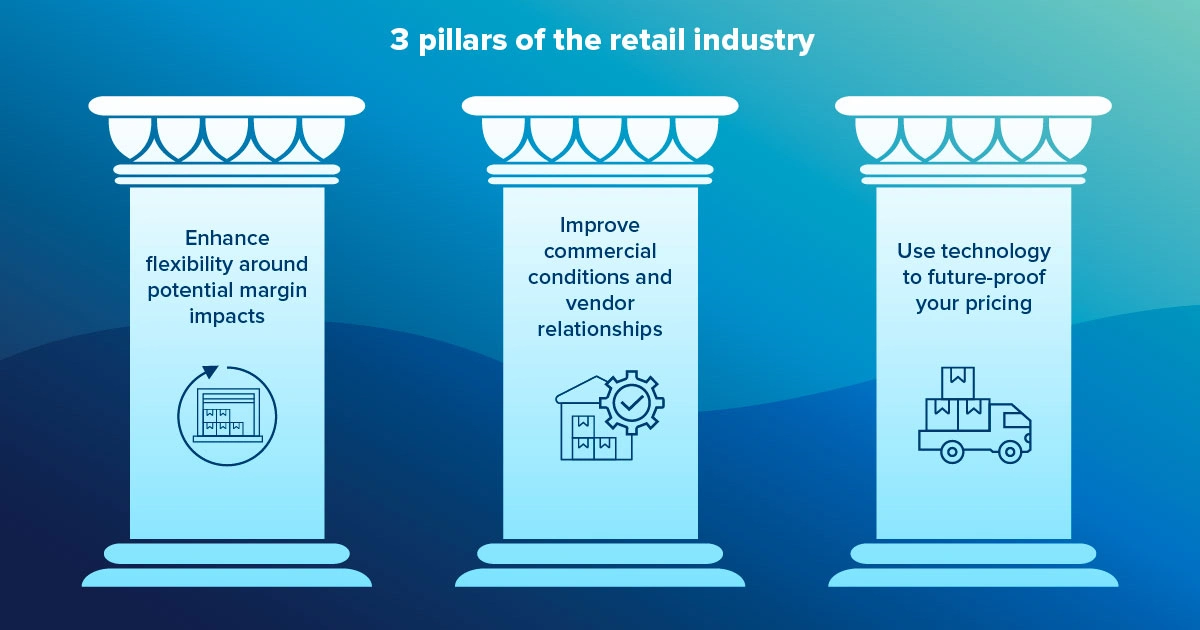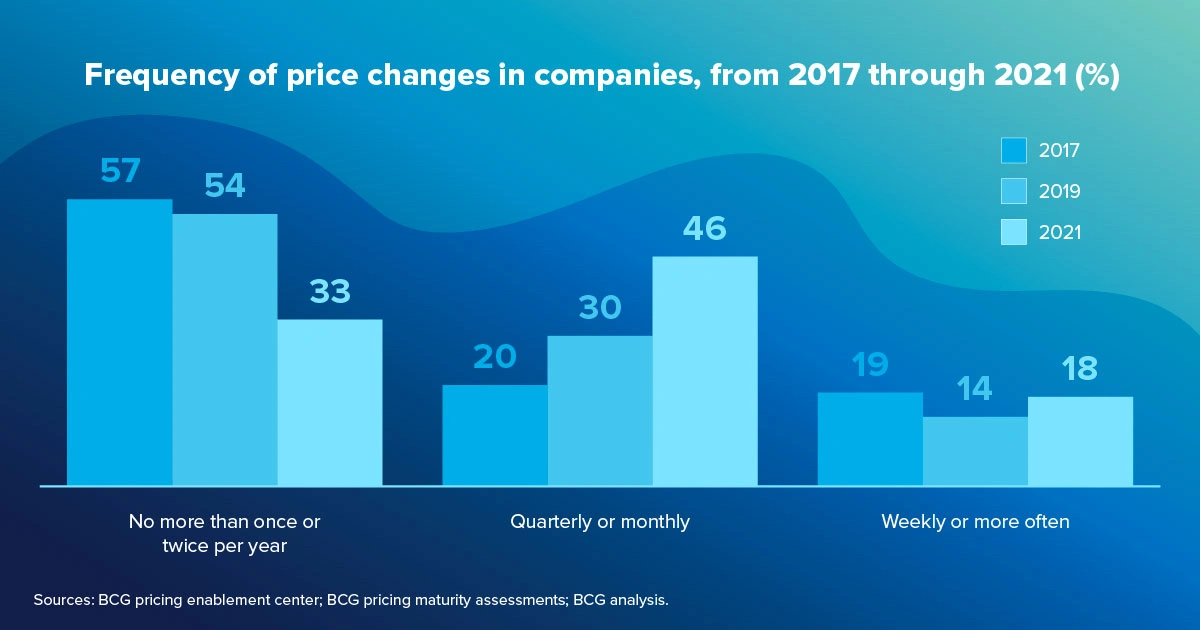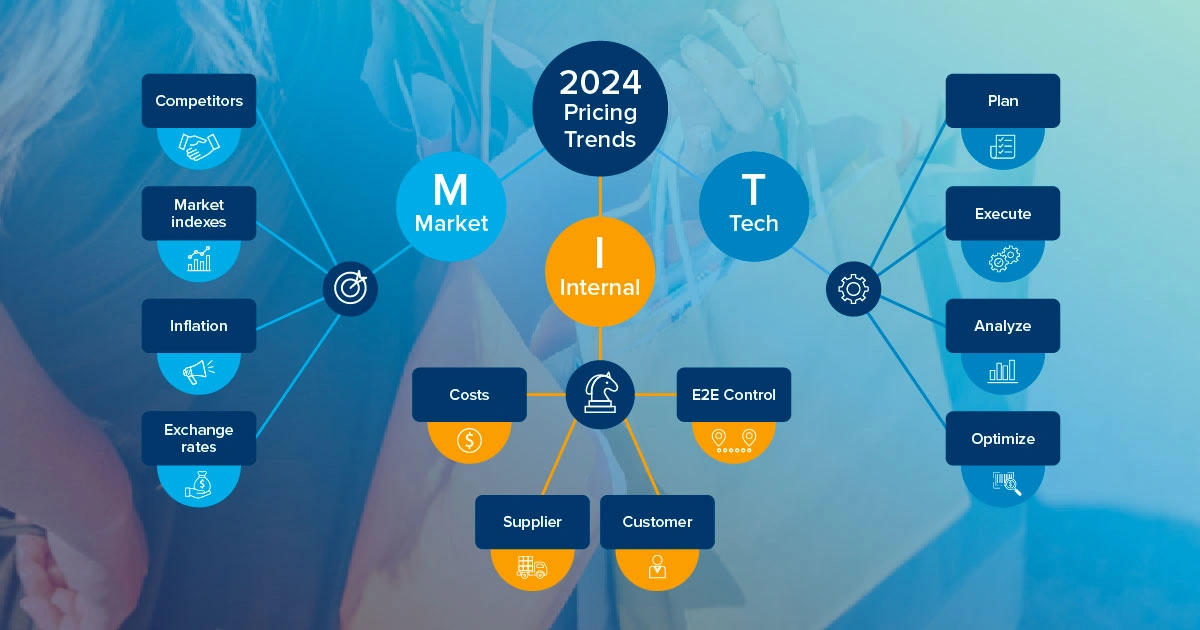
Retail pricing best practices: 3 fundamental pricing strategy pillars to remember
In the ever-evolving retail industry, adaptation isn't just a choice; it's a necessity. Today’s retail landscape continues to be reshaped by technological advancements, shifting consumer behaviors and the relentless pursuit of innovation. Retailers like you find themselves amidst a whirlwind of change, where traditional norms are challenged, and new opportunities emerge at every turn.
Your responsiveness to current industry trends is paramount to success in such a dynamic marketplace, and it all revolves around your pricing strategy. What’s the right pricing strategy for you right now? Let’s explore 3 crucial elements to remember when defining and optimizing your retail pricing strategy.

You already know that you can’t set prices without considering the market environment, but recent sustained inflation has altered the way that your organization does this, especially how often it revises prices to absorb rising costs.
According to Boston Consulting Group research, in 2017, most retail companies reviewed their pricing strategy only annually. Fast-forward to today, when the approach has evolved to adjusting prices quarterly, monthly or even weekly.
Given the change in frequency with which prices are revised and adjusted, an agile pricing strategy is necessary to enhance your flexibility around potential margin impacts resulting from market shifts. International retailers must also consider market indices, exchange rates and commodity codes that affect prices in each country where they operate.

Commercial conditions and your relationship with vendors are key to optimizing prices. Negotiating good terms with suppliers and having complete control of any off-invoice claims you apply to them can lead to a considerable increase in the P&L. In addition, your suppliers’ contribution and funding could considerably improve a promotional campaign’s success rate while aligning your own goals with those of the supplier. This is accomplished with the ability to use, decipher and analyze your internal data to determine if a promotion is profitable or not.
From a customer perspective, ensure all price adjustments are in sync with your brand and fully support your loyalty programs. Customers who are loyal to your brand want to feel that they receive the best value for their money. You can achieve this with targeted promotions or differential pricing. With accurate internal information, you can implement rigid pricing boundaries and avoid extreme or speculative price variations that can drive loyal and new customers away.

A robust and flexible revenue management solution facilitates the implementation of distinct pricing strategies tailored to different product categories and even to each individual product. You’ll be able to make ad-hoc adjustments to a price or its conditions (costs, discounts, sales force incentives) that will immediately simulate the impact on key KPIs, such as profit or revenue. In addition, you can automate price changes for Electronic Shelf Labels (ESL) based on data and insights to truly enhance the omnichannel experience.
Artificial Intelligence (AI) has emerged as a valuable pricing strategy ally for retailers, allowing a wide range of possibilities to be analyzed quickly. Machine Learning (ML) solves pricing problems with enhanced transactional data, optimization algorithms and statistical methods to predict or optimize the desired KPI.
Examples of information you must provide to the algorithms, which will automatically determine the price that meets your "rules" set to achieve your goals, include the ability to answer these questions:
- What are your next goals or KPIs?
- Will this increase your profits?
- What are your conditions for determining prices?
- Can you ensure that the profit per product doesn't fall below a certain amount?
- Can you keep any price differences compared to your closest competitors below X?
Using these answers to create an integrated pricing strategy will safeguard your market share, maximize revenue potential and set you up for success in an ever-changing industry.
Want to learn more about best practices in pricing? Take the retail industry journey today!
Get the latest news, updates, and exclusive insights from Vistex delivered straight to your inbox. Don’t miss out—opt in now and be the first to know!


